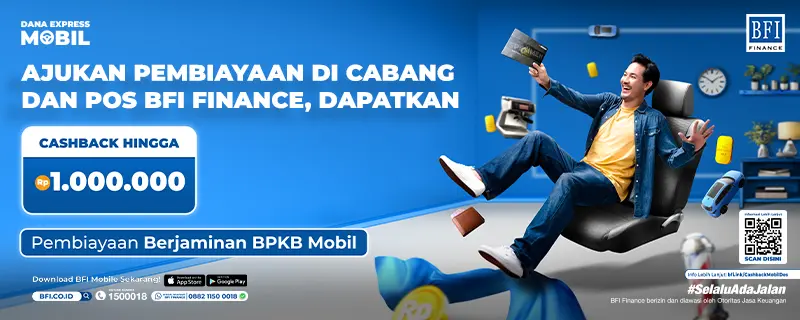Some people may struggle to pay off their credit bills due to financial difficulties. For instance, a decrease in income, urgent needs, or high debt burdens.
In such situations, refinancing can be a strategy to obtain easier repayment terms, either with lower interest rates or longer tenors, so that monthly cash flow feels more manageable. Let’s dive deeper into refinancing in this article.
What Is Refinancing?
Refinancing is a term that refers to the process of obtaining new financing to replace an existing loan. More specifically, refinancing is a method of repaying a loan by applying for a new one. Interestingly, borrowers may benefit from lower interest rates, meaning the total repayment amount will be less than the original loan.
Additionally, borrowers may adjust the tenor and other requirements related to their loan agreement. If the lender approves, the borrower will receive a new contract to replace the old one.
How Does Refinancing Work?
Borrowers generally apply for refinancing to obtain a new credit agreement that better fits their financial capacity. Several factors can contribute to approval, such as an improved credit score, which may help secure lower interest rates.
To start, the borrower must submit a refinancing request to the current lender or a new one. Typically, this process includes reviewing and reassessing loan terms before approval is granted.
Refinancing can be applied to various types of loans, such as car loans, mortgages, and business loans.
Benefits of Refinancing for Borrowers
This method is commonly used as a solution for those struggling with high-interest loans. Beyond that, refinancing offers several other benefits, such as:
1. Choosing Better Loan Options
One benefit of refinancing is that borrowers can select more favorable loan terms, whether in service, financial arrangements, or repayment period. This allows borrowers to minimize potential losses or opportunity costs that may arise from their existing loans.
2. Reducing Loan Burden
Through refinancing, borrowers can extend their repayment periods. For example, if you feel burdened by paying IDR 7 million per month for 5 years, you may adjust it to IDR 1.5 million per month for 15 years under refinancing.
This way, you can ease your monthly payment burden and reduce the risk of default.
3. Lower Interest Rates
One of the main benefits of refinancing is the potential for lower interest rates. Many borrowers use refinancing to adjust their loan terms to suit their financial capacity, such as through a rate-and-term refinancing scheme.
4. Potential Access to Additional Funds
Refinancing can also provide extra funds for borrowers struggling to repay existing loans. Through this process, borrowers may gain additional money to pay off obligations or cover other needs.
Types of Refinancing
Refinancing can take several forms, ranging from cash-out refinancing to consolidation refinancing. Here’s an overview of each type:
1. Cash-Out Refinancing
In this type, you purchase an asset on credit, then sell it to another party at a higher price. This strategy is seen as a refinancing method when the market value of the collateral asset increases.
This allows you to gain cash from the price difference. Therefore, leveraging assets with increased value for refinancing can be a recommended step.
2. Cash-In Refinancing
Unlike cash-out, cash-in refinancing involves injecting cash to pay off part of an existing loan. This reduces the principal balance and, consequently, lowers future interest obligations.
3. Rate and Term Refinancing
Rate and term refinancing refers to paying off an existing loan with a new one at a lower interest rate. The primary goal is to reduce monthly installments or secure more competitive interest rates.
This is done by applying for a new loan to repay the current one, but with better terms.
4. Consolidation Refinancing
Consolidation refinancing is the process of combining multiple loans into a single new loan with more favorable terms, such as a lower average interest rate.
This step aims to simplify financial management, either by reducing total monthly installments or by consolidating multiple loans into a single, more manageable one.
That’s an explanation of what refinancing is and its various types. By understanding this concept, you can make wiser decisions in choosing financing strategies that suit your financial situation.
Remember, every financing decision comes with its own risks and consequences. Make sure you consider your needs, repayment ability, and carefully read all terms and conditions before applying for refinancing.
If you need additional funds to cover various needs, such as business capital or investments, you can take advantage of financing services from BFI Finance. With collateral options such as Motorcycle BPKB, Car BPKB, or House/Shop/Office Certificates, you can obtain loans with competitive interest rates and longer tenors.
As a financing company with more than 40 years of experience, BFI Finance is licensed and supervised by the Financial Services Authority (OJK). This makes BFI Finance a trusted partner for Indonesians, offering financing solutions for vehicles, business capital, and refinancing with a fast and secure process.
So, don’t hesitate—apply now because #SelaluAdaJalan with BFI Finance.







